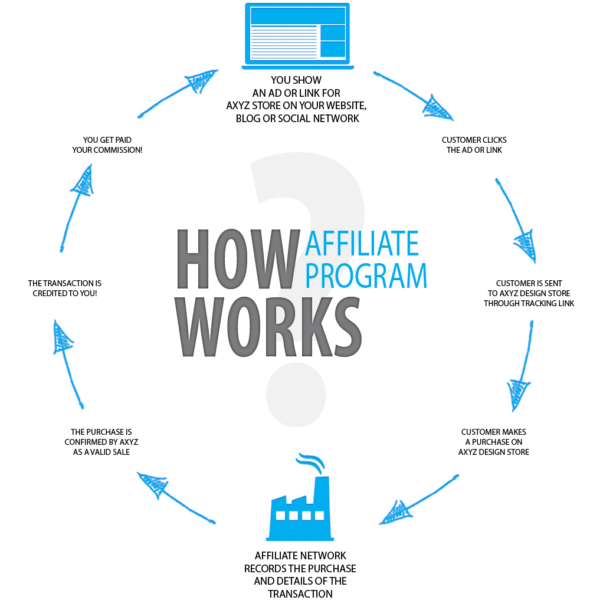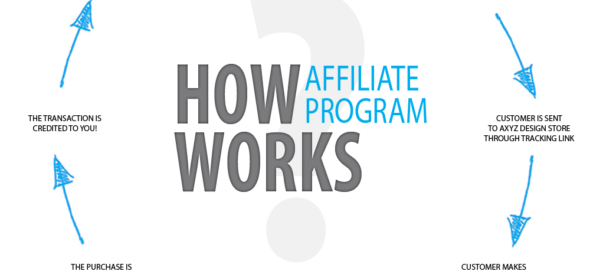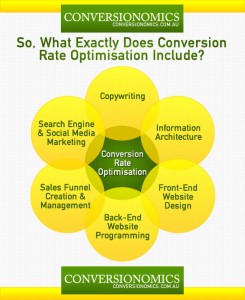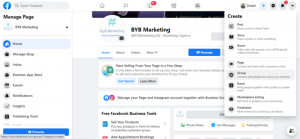— July 3, 2019
Introduction: What is Affiliate Marketing?
If you manage an e-commerce site or work with an advertiser, the affiliation is a marketing lever all the more useful as its ROI is fully mastered. Indeed, it is a form of performance marketing that involves paying a third party (the affiliate, a website for example) for X or Y action completed. Generation of qualified leads, sales, registration to a loyalty program …
For each share and under well-controlled conditions, a percentage of the sale or a fixed amount will be donated to the partner.
So getting into affiliation has a lot of potentials, if you do it right. Choice of tools or platform, supervision of validation conditions, choice of allocation and remuneration model, fight against fraud, setting up regular commercial activities …
Some figures on Affiliation Marketing

Thus, there is a 10.1% increase in affiliate marketing spending in the United States each year, which means that by 2020, that number will reach $ 6.8 billion.
In 2018, content marketing costs were estimated at 62% of the costs of traditional marketing programs while simultaneously generating three times more revenue than traditional methods. In fact, 16% of all orders placed online can be attributed to the impact of affiliate marketing.
In March 2017, the Amazon Affiliate Program changed, offering rates of 1 to 10% of product revenue to creators, allowing affiliates to significantly increase their passive income based on their Marketing Tools.
For example, Jason Stone’s affiliate marketing, also known as Mentor Millionaire, has reached $ 7 million in retail sales during the summer of 2017.
Affiliate marketing is an ideal home-based business because it requires very little money to start, you have no stock of products, or take care of delivery or service. You are essentially paid to direct new customers to other companies.
Affiliate marketing is not difficult, but like any business, it requires knowledge, planning, and constant effort to generate significant revenue. Here are some things you can do to make sure your adventure in affiliate marketing is a success.
1- Choose your platform
There are tools to create your own affiliate program. Another solid option is to turn to a reputable affiliate platform, such as Amazon, CJ, Pabbly… if you are a beginner, I suggest you start with Amazon partners program. You can use Amazon product research tools like Jungle Scout, AMZScout, etc to find products to start with affiliate marketing.
It’s all about comparing several criteria to make the right choice:
- accessibility of reporting and tracking tools;
- variety of compensation options;
- easy for affiliates to generate their personalized links or find the visuals they need;
- easy promotion of campaigns;
- responsiveness of the teams;
- good billing management …
2- Choose an attribution model
The marketing award raises the question of “who pays” for a goal accomplished. In a context where the user goes through a multiplicity of channels and interactions before buying or signing up, it is increasingly difficult to see which marketing lever should be rewarded.
We are talking about the choice of an attribution model. The most classic are those of the first click or the last click, but the conversion path is much thinner than that. Rather than remunerating the last channel (which may be a couponing site, for example), it may be interesting and more appropriate to focus on a weighted remuneration of the various elements of the user journey that led to the final sale.
Beyond the choice of the model, the question of the attribution window must also be addressed. At what point is the conversion detached from the road traveled in the previous months (if it is), which directly impacts the affiliate’s remuneration?
3- Define precise objectives
Affiliation is a marketing strategy that, like the others, must be accompanied by objectives in order to be measured and refined. Without this, no remarkable ROI!
What are your goals? What is the value of a lead? Visibility without necessarily immediate sale to the key? What does your ideal affiliate look like? Who are you targeting? Where are your potential customers when they surf the web? What are your competitors doing?
You need to ask yourself these kinds of questions and link specific figures and personas to stop a strategy that you can follow and measure from day to day. This step will depend on your ability to drive well with the data.
4- Choose an advantageous remuneration for you, but also for the publisher
Choosing a competitive and interesting remuneration for you involves calculating your margins and costs, but also comparing what you expect with what the market in your sector already offers to its affiliates. Without this step, many of them may just favor competition!
Succeeding your affiliation program, therefore, requires a specific study to find what an advantageous remuneration means for you, but also for your network of partners.
One last important point: do not neglect the impact of payments on time, ideally at a fixed date in the month. This is what big programs like Amazon Partners, Booking.com … it reassures affiliates, limits the stormy exchanges and encourages them to continue to promote you.
5- Identify influencers to make them paid ambassadors
Traditional websites and blogs are not the only ones to represent a relevant addition to your affiliate network. Also remember to identify influencers on social networks, to generate sales or leads from Instagram or Facebook for example.
6- Highlight your affiliate program
To be effective, your program must be visible in order to “recruit” affiliates throughout the year.
Your platform should help you, but it is not the only one to act: also add an “affiliation” section to your website and do not hesitate to contact sites or influencers in your theme, to propose to join the program.
7- Animate your affiliate program throughout the year
Private sales, flash sales, seasonal operations, promotional codes, banners that change regularly … an active (and reactive) affiliation program helps to promote the success and motivation of its partners. It is important to update offers regularly to generate interest throughout the year.
8- Have a system in place to fight against fraud
Fraud is, unfortunately, part of the affiliation ecosystem, especially at the level of lead generation. It is therefore important to have particularly precise conditions of use and a system in place to detect abuses and automatically solve the problems encountered at this level. Discover the main frauds and how to fight them.
9- Communicate with your affiliates (dedicated newsletter, influencer operations, specific compensation offers …)
Your affiliates are like a personal army of salespeople and ambassadors. To succeed in your affiliate marketing, you should ideally be closer to their actions, their expectations, and their challenges.
You can for example:
- have a dedicated newsletter, as SEMRush does through its Berush program
- offer incentives several times a year (competitions, boosted remuneration, levels to reach …)
- identify your best affiliates and offer them tailor-made offers or visuals
- maintain a blog with tips, case studies, conversion aids …;
- multiply customization tools: search box, customizable banners, product feeds, etc.
In any case, before you get started in affiliate marketing, learn everything that can succeed. More importantly, if you decide to pursue an affiliate marketing business, or if you want to add it to an existing business, understand that it ‘s not fast, automatic, or effortless. Like all home-based businesses, you need a plan and daily involvement to earn income with online affiliate marketing.
Overall, your chances of making money with an affiliate program are probably no better or worse than any other internet based business. Your success depends on how you run your affiliate plan.
Do you already have an affiliate program? What are the good practices you have identified so far, or the pitfalls to avoid? Share your feedback with us leaving your comment below.
Digital & Social Articles on Business 2 Community
(25)








